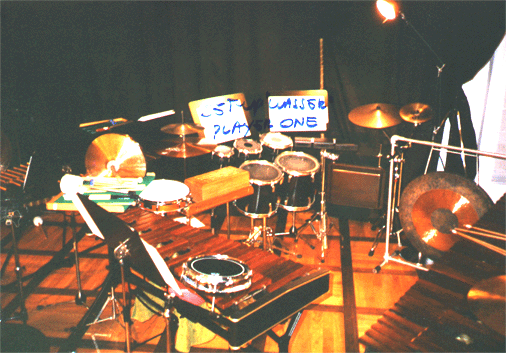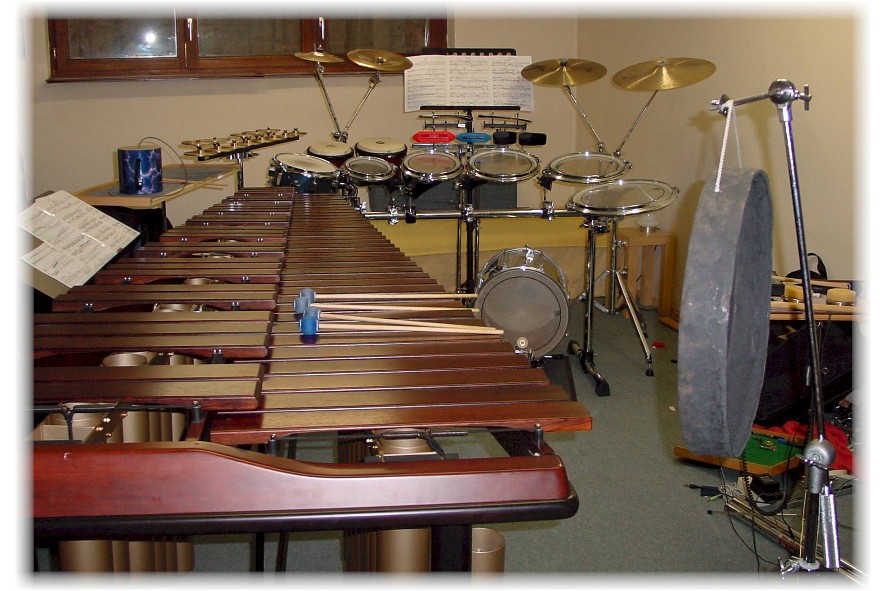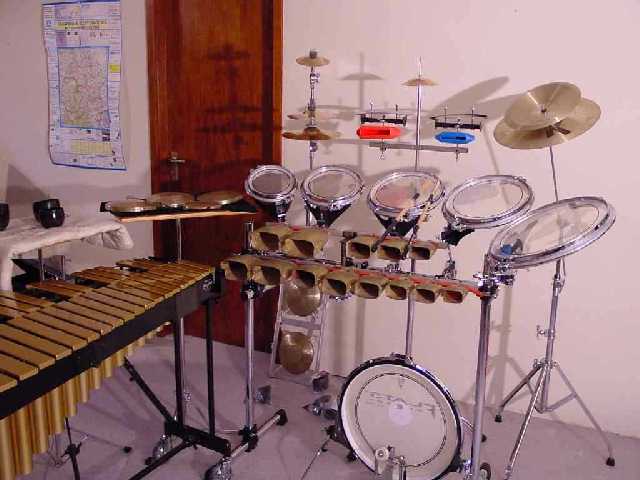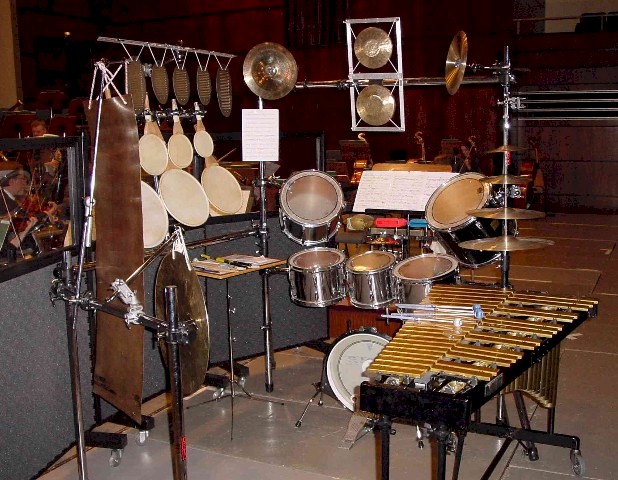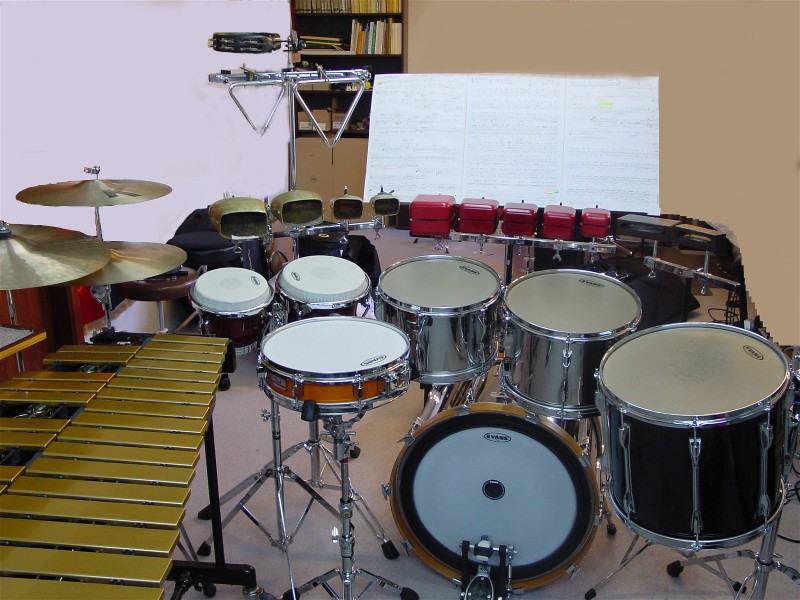for percussion solo and symphony orchestra op.28
composed 1999/2000 (revised 2003)
Soloist’s SET-UP:
Vibraphone
Two 12 inch china cymbals, same size but slightly different in pitch
Two Chinese opera gongs, bounded in a frame (high on the top and low above)
Four cymbals, from high to low: 10‘‘ Splash, 12‘‘, 16‘‘, 18‘‘ (mostly crash sounds)
One EXTRA 10“ splash cymbal to be mounted between the toms in front of the plastic blocks
One Tam-tam, not too large (or Zildjian’s Gong-sheet)
Two plastic wood blocks and one cowbell mounted together.
Bass drum with pedal, rather small. (the best would be 20 or 18 inch)
Five tom-toms in sizes: 15, 14, 13, 12, 10 Inch. All with resonance heads, and long sustain
Seven Japanese drums „uchwa – daikos“
Five „Earth-Plates“ also NOT tuned but five different pitches
Several small and exotic instruments, metal if possible with long sustain fort he improvisation
in the slow section
Orchestra:
1 Flauto piccolo , 2 Flauti grandi, 3 Oboi (3.ob. anche corno inglese), 3 Clarinetti in Si b (3. Cl. Anche clarinetto basso)
2 Fagotti, 1 Contrafagoto, 4 Corni in Fa, 3 Trombe in Sib, 2 Tromboni, 1 Trombone basso, 1 Tuba, 1 Arpa, Timpani,
3 Percussioni, Archi (min. 10 -10 – 8 – 6 -4)

